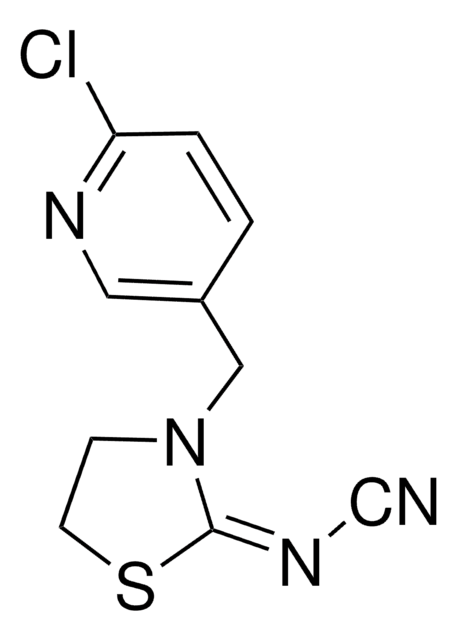56816
Clothianidin-d3
PESTANAL®, analytical standard
Synonym(s):
(E)-1-(2-Chloro-5-thiazolylmethyl)-3-(methyl-d3)-2-nitroguanidine
Select a Size
Select a Size
About This Item
Recommended Products
grade
analytical standard
Quality Level
product line
PESTANAL®
assay
≥97.0% (HPLC)
shelf life
limited shelf life, expiry date on the label
technique(s)
HPLC: suitable
gas chromatography (GC): suitable
application(s)
agriculture
environmental
format
neat
mass shift
M+3
SMILES string
[2H]C([2H])([2H])N\C(NCc1cnc(Cl)s1)=N/[N+]([O-])=O
Related Categories
General description
Application
Packaging
Legal Information
signalword
Warning
hcodes
Hazard Classifications
Acute Tox. 4 Oral - Aquatic Acute 1 - Aquatic Chronic 1
Storage Class
11 - Combustible Solids
wgk_germany
WGK 3
flash_point_f
Not applicable
flash_point_c
Not applicable
Choose from one of the most recent versions:
Already Own This Product?
Find documentation for the products that you have recently purchased in the Document Library.
Customers Also Viewed
Protocols
Learn more about Neonicotinoids - active substances used in plant protection products to control harmful insects.
Analysis of banned neonicotinoid insecticides from dandelion blossoms using QuEChERS and LC-MS.
Our team of scientists has experience in all areas of research including Life Science, Material Science, Chemical Synthesis, Chromatography, Analytical and many others.
Contact Technical Service










